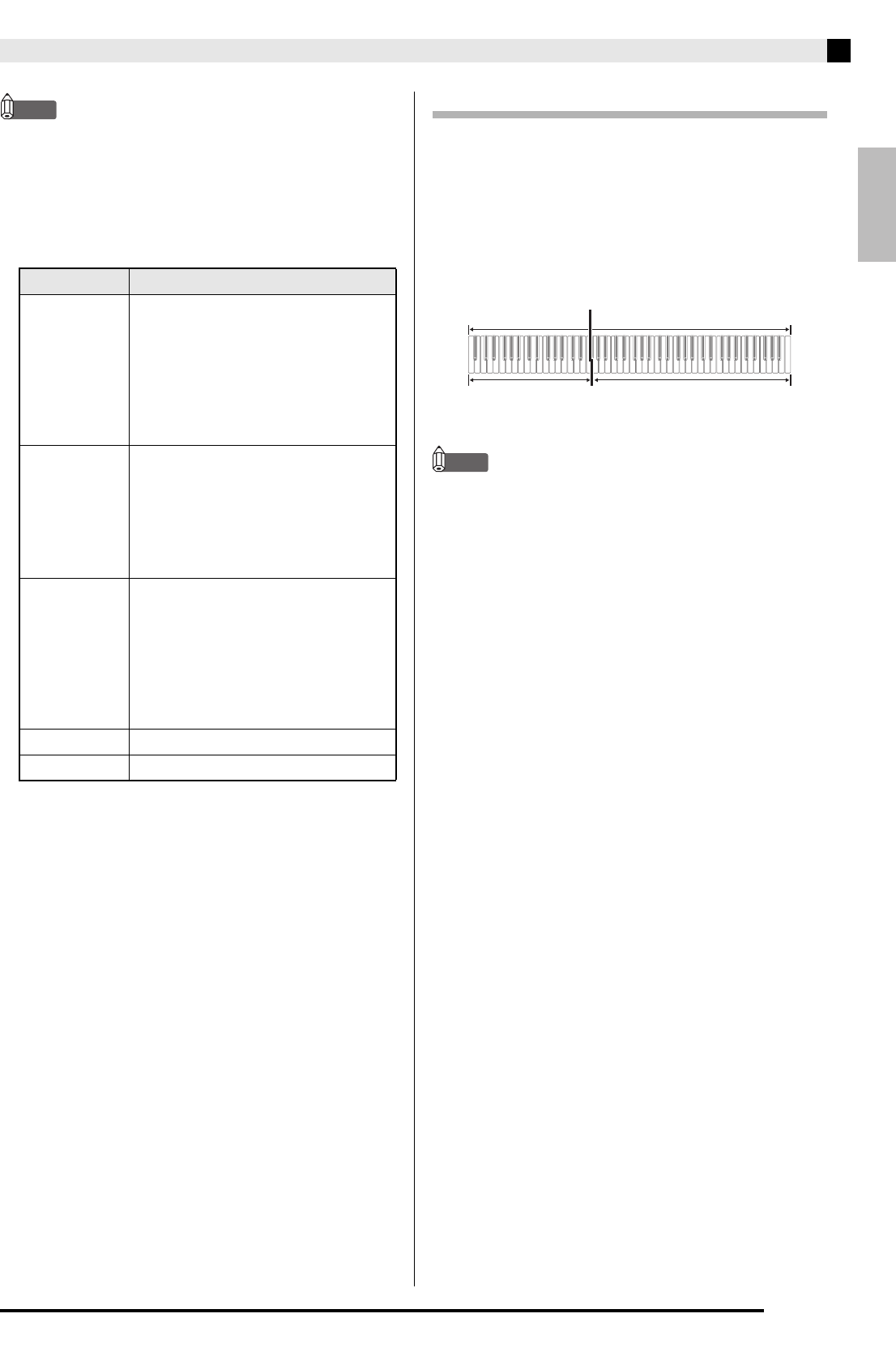
English
Playing with Different Tones
E-9
NOTE
• Of the digital piano’s 18 built-in tones, the first five
are grand piano tone. Each tone has its own
distinctive merits, so you should select the tone that
suits the song you are playing along with or your
own personal preferences. The CONCERT and
MODERN tones are assigned to buttons for quick
and easy selection.
* Feature that applies computer morphing
technology to enable seamless changes between
sounds sampled at various dynamics from a full
concert grand piano.
Bass Tones (BASS 1, BASS 2)
Selecting either of the two BASS (LOWER) tones (1 or
2) in step 1 of the above procedure will assign the
selected bass tone to the low range (left side) of the
keyboard. The high range (right side) will be assigned
the tone that was selected when you pressed the
BASS 1 or BASS 2 key.
• BASS 1 and BASS 2 let you effectively split the
keyboard between two different tones.
NOTE
• To return the keyboard to a single tone, select any
tone other than BASS 1 or BASS 2.
• You cannot select BASS 1 or BASS 2 when recording
to Track 2.
Tone Name Characteristics
CONCERT This is a full concert grand piano tone
that uses Linear Morphing* for
dynamic and natural tone changes.
This tone is designed to reproduce
damper, resonance, and other piano
nuances, which makes it ideal for
virtually any type of piano
performance.
MODERN This tone provides a bright grand piano
sound. The volume and timbre of this
tone is quick to respond to different
keyboard pressures, and it has
relatively deep reverb. This tone is a
good choice for dynamic and lively
performances.
CLASSIC This is a natural piano tone that closely
resembles the sound of an acoustic
piano. Though reverb and other flashy
effects are subdued for this tone,
resonance is more pronounced, which
enables expression of delicate nuances.
This tone is a good choice for lesson
and practice sessions.
MELLOW Warm and mellow piano tone
BRIGHT Bright and clear piano tone
Split Point
Low Range High Range
BASS 2 PIPE ORGAN
(Currently selected tone.)


















